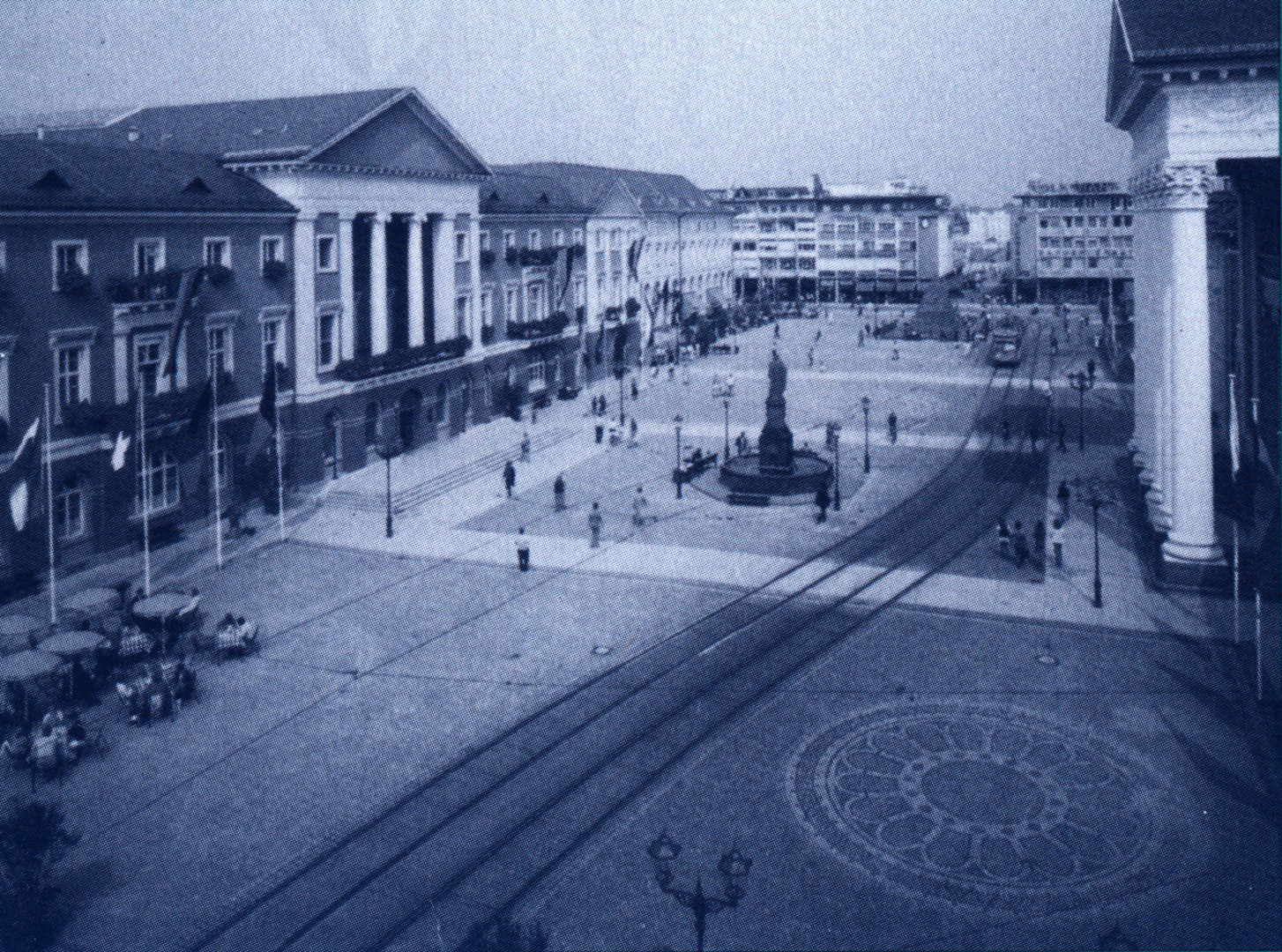“VBK – A Moviemap of Karlsruhe” by Naimark
Conference:
- SIGGRAPH 1991
-
More from SIGGRAPH 1991:


Type(s):
Title:
- VBK - A Moviemap of Karlsruhe
Program Title:
- Demonstrations and Displays
Presenter(s): Presenter(s):
Project Affiliation:
- Naimark & Company
Description:
VBK is a surrogate travel program commissioned by the Zentrum für Kunst und Medientechnologie, a state-funded arts and media lab under construction in Karlsruhe, Germany. Karlsruhe has a well-known tramway system, with over 100 km of track snaking from the downtown pedestrian area out to neighboring villages at the edge of the Black Forest. The entire tram system was shot in both directions from a tramcar outfitted with a 16mm film camera triggered by the tram’s electronic odometer, at two, four, and eight meters per frame, depending on location. The tracks assured unrivaled stability and seamless match-cuts. Using the tramway line as the basis for a moviemap of the town has its drawbacks. It doesn’t go everywhere. For example, Karlsruhe has two large parks which are barely visible in the foot-age. Yet the tramway routes are there for reasons of history, culture, politics, and geography – not a bad basis for using them to sample the community. Surrogate travel (as originally defined by MIT’s Aspen Moviemap a decade ago) is a more cinematic approach to virtual reality than computer-based models. The imagery is “more real” because it originated in a camera, but it is less interactive since one can only travel where the camera originally shot. The delivery system for VBK is controlled by a Macintosh II computer using HyperCard and custom software. It consists of a large projected video image from a single Pioneer 8000 videodisc player with a built-in frame buffer that eliminates blanking during searches, a graphic map-and-cursor display, and a custom-built input consisting of a broomstick-size lever for controlling speed (from zero to Mach 3) and direction, and three foot switches for choosing which direction to go at each intersection.
The installation is intended to be transparent in its responsiveness (no significant lags) and culture-independent (e.g., no text). Mediated Reality and the Consciousness of Place “It’s last October. I’m in San Francisco, sitting in a video editing room looking at the film transfer of the Karlsruhe footage, which I shot the previous month from the front of a tramway car. During the next few days, I will edit it for a video-disc. I am watching hundreds of little snippets of straight and turn sequences whiz b at honotic speeds. For a few minutes, it’s kind of fun. Then it all starts to look alike. Dang. I can’t believe I’m doing this again. It isn’t quite like making a linear movie with an aesthetic of montage. The purpose is to organize the material to minimize disc search time and to make programming efficient. What a drag. But it’s gotta get done. “Around the third dav of non-stop logging and editing, something extraordinary happens. I know where I am in the footage. Always. You can show me any of the forty-some-thousand frames, and I can point to the corresponding place on a map, as long as I can “move” back and forth a bit. It actually seemed to happen all of a sud-den, like I was astral-projected to see Karlsruhe from a ‘God’s-eve’ view. “I had formed a mental map. ‘Karlsruhe’ became a singular thing, an almost living entity with which I could now relate. Once that happened, every frame had its place. “A colleague once told me he believed he could tell what section of Paris he was in purely by the qual-it of light. “I’m convinced that this sense of wholeness, of consciousness, of place can be conveyed in a very fast and highly impressionistic way with emerging interactive media. Not by simulating reality – often a self-perpetuating trap and ultimately a losing battle. But by abstracting reality – creating experiences not possible in the real world. And that these experiences, when done artfully, will make you appreciate really being there even more.”
Other Information:
Hardware: Macintosh Ilfx. Pioneer 8000 videodisc player, Barcovision 1500 video projector, ODC videodisc, custom inputs
Software: HyperCard, custom
Application: Surrogate travel
Type of System: Player, single-user
Interaction Class: Vehicle
Acknowledgements:
Software Design: Christoph Dohrmann
Thanks to K. O. Beckman, Joe Rosen, Mischa Schaub, Apple Computer, Inc., Pioneer LaserDisc Corporation, The Exploratorium, Zentrum für Kunst und Medientechnologie




